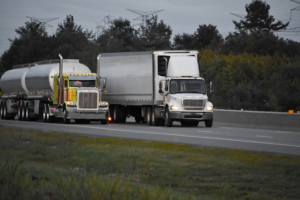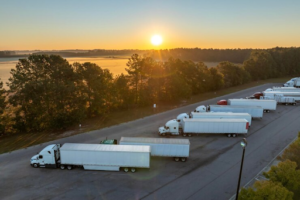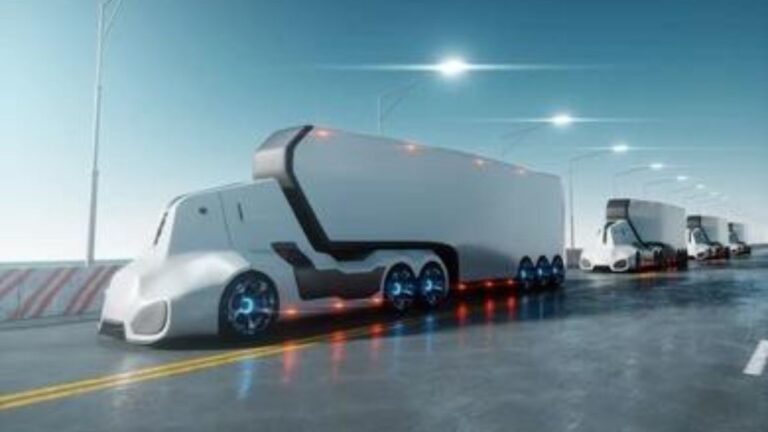In an era where efficiency and technology are reshaping the transportation industry, tractor trailer platooning is emerging as a game-changer. If you’ve ever wondered, what is platooning in trucking and how it can impact the future of freight, you’re in the right place. This article will dive into the concept, its benefits, challenges, and what the future holds for this innovative approach to trucking.

What is Tractor Trailer Platooning?
Platooning in trucking refers to a convoy of two or more trucks driving in close proximity to each other, using advanced technology to maintain a tight formation. The lead truck sets the pace and direction, while the following trucks use automation and vehicle-to-vehicle communication to synchronize their movements. This system allows the trucks to drive closer together than human drivers could safely manage, reducing aerodynamic drag and improving fuel efficiency.
The Technology Behind Platooning
At the core of tractor trailer platooning is a suite of advanced technologies that work together to ensure safety and efficiency. These include:
- Vehicle-to-Vehicle (V2V) Communication: This technology allows the trucks in the platoon to communicate with each other in real-time. The following trucks receive data from the lead truck about speed, braking, and acceleration, allowing them to react almost instantaneously.
- Adaptive Cruise Control (ACC): ACC is a system that automatically adjusts the speed of the trucks in the platoon to maintain a safe distance. It takes into account the speed and distance of the vehicles ahead, ensuring that the trucks stay in formation without the need for constant manual input.
- Autonomous Braking Systems: These systems enable the trucks to brake simultaneously and automatically if the lead truck slows down or if an obstacle is detected. This synchronized braking significantly reduces the risk of accidents.
- Telematics and GPS Navigation: Advanced telematics systems provide real-time data about road conditions, traffic, and other factors that could affect the platoon. GPS navigation helps the lead truck chart the most efficient route, which is then followed by the rest of the convoy.
Benefits of Tractor Trailer Platooning
The benefits of tractor trailer platooning are significant, both for trucking companies and the environment. Here’s a look at some of the key advantages:
- Fuel Efficiency: One of the primary benefits of platooning is the reduction in fuel consumption. By driving in close formation, the trucks reduce aerodynamic drag, which can lead to fuel savings of up to 10%. For companies operating large fleets, these savings can translate into millions of dollars annually.
- Reduced Emissions: With better fuel efficiency comes lower carbon emissions. Platooning can help the trucking industry reduce its environmental impact, which is crucial in an era where sustainability is increasingly important.
- Increased Road Capacity: Platooning allows trucks to travel closer together, effectively increasing the capacity of highways without the need for additional lanes. This could help alleviate congestion on busy freight routes.
- Improved Safety: While the idea of trucks driving closely together might seem risky, the technology behind platooning is designed to enhance safety. Automated systems reduce the likelihood of human error, and the synchronized braking and acceleration help prevent accidents caused by sudden stops or lane changes.
- Lower Operating Costs: In addition to fuel savings, platooning can reduce wear and tear on vehicles, lowering maintenance costs. The improved efficiency also means trucks can cover more ground in less time, increasing overall productivity.
Challenges and Concerns
Despite the numerous benefits, tractor trailer platooning is not without its challenges. Here are some of the hurdles that need to be addressed:
- Regulatory Hurdles: One of the biggest challenges facing platooning is the lack of a consistent regulatory framework across different states and countries. For platooning to be widely adopted, regulations need to be standardized to allow trucks to operate in platoons across borders without facing legal issues.
- Infrastructure Requirements: While platooning can work on existing highways, there may be a need for infrastructure upgrades to fully support the technology. This could include dedicated lanes for platoons or upgrades to roadside communication systems.
- Cybersecurity Risks: The reliance on V2V communication and automated systems makes platooning vulnerable to cyberattacks. Ensuring that these systems are secure is critical to preventing potential disruptions or accidents caused by hacking.
- Driver Acceptance and Training: While platooning reduces the need for manual driving, drivers still play a crucial role in monitoring the system and taking control when necessary. Ensuring that drivers are adequately trained and comfortable with the technology is essential for its success.
- Public Perception: Convincing the public that platooning is safe and beneficial is another challenge. Widespread adoption will require public trust in the technology, which can be achieved through education and transparent communication about the safety measures in place.
The Future of Platooning
The future of tractor trailer platooning looks promising, with several pilot projects and research initiatives underway. As the technology continues to evolve, we can expect to see even more advanced systems that further enhance the benefits of platooning.
- Integration with Autonomous Vehicles: As autonomous vehicle technology advances, it’s likely that we’ll see a convergence between platooning and fully autonomous trucks. This could lead to even greater efficiencies and further reduce the need for human drivers in certain scenarios.
- Expansion to Other Vehicles: While platooning is currently focused on trucks, there’s potential for the technology to be adapted for use with other types of vehicles, such as buses or even passenger cars. This could lead to broader changes in how we think about vehicle transportation and road infrastructure.
- Global Adoption: As more countries recognize the benefits of platooning, we can expect to see a push for global standards and regulations that facilitate cross-border platooning. This could significantly impact international freight and logistics, making it more efficient and cost-effective.

Conclusion
Tractor trailer platooning represents a significant step forward in the evolution of the trucking industry. By leveraging advanced technology, it offers a way to improve fuel efficiency, reduce emissions, and enhance road safety. However, for platooning to reach its full potential, challenges such as regulatory hurdles, cybersecurity, and public perception must be addressed.
As we look to the future, the potential for tractor trailer platooning is vast. Whether it’s through integration with autonomous vehicles or expansion to other types of transportation, platooning is poised to play a crucial role in the future of freight and logistics.
